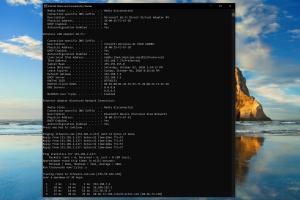How to Write a Batch File: A Comprehensive Guide to Automation

-
Quick Links:
- 1. Introduction to Batch Files
- 2. What is a Batch File?
- 3. Benefits of Batch Files
- 4. Basic Syntax of a Batch File
- 5. Creating Your First Batch File
- 6. Common Batch Commands
- 7. Advanced Batch Scripting Techniques
- 8. Case Studies: Real-World Applications of Batch Files
- 9. Expert Insights and Best Practices
- 10. Troubleshooting Common Issues
- 11. FAQs
1. Introduction to Batch Files
Batch files, often with the .bat extension, are simple text files containing a series of commands that can be executed in the Windows command line (CMD). This guide will take you through the process of writing effective batch files, providing you with the knowledge to automate repetitive tasks and improve your productivity.
2. What is a Batch File?
A batch file is a script file in DOS, OS/2, and Windows that consists of a sequence of commands for the operating system. It is a way to automate tasks that would otherwise need to be typed manually in the command prompt.
3. Benefits of Batch Files
- Automation: Save time by automating repetitive tasks.
- Efficiency: Run multiple commands with a single command.
- Ease of Use: Simple to write and modify.
- Task Scheduling: Can be scheduled to run at specific times using Windows Task Scheduler.
4. Basic Syntax of a Batch File
The syntax of a batch file varies depending on the command being used, but generally follows a straightforward structure:
@echo off
command1
command2
command3
Here, @echo off prevents the commands from being displayed in the command prompt window.
5. Creating Your First Batch File
To create a batch file, follow these steps:
- Open Notepad or any text editor.
- Type your commands, starting with
@echo offto suppress command output. - Save the file with a .bat extension (e.g.,
myscript.bat). - Run the batch file by double-clicking it.
6. Common Batch Commands
| Command | Description |
|---|---|
echo |
Displays messages or turns command echoing on or off. |
pause |
Pauses the execution of the batch file and waits for user input. |
del |
Deletes one or more files. |
copy |
Copies files from one location to another. |
mkdir |
Creates a new directory. |
7. Advanced Batch Scripting Techniques
Once you have a grasp of the basics, you can explore more advanced techniques:
- Variables: Store values using the
setcommand. - Conditional Statements: Use
ifstatements to control the flow of the script. - Loops: Implement loops with
forto iterate over a set of commands.
8. Case Studies: Real-World Applications of Batch Files
Batch files are widely used in various industries to automate tasks. Here are a few examples:
Example 1: Automated Backup
A company can create a batch file to back up important files to an external drive automatically every night.
Example 2: Software Installation
IT departments often use batch files to install multiple software applications on new computers, saving time and ensuring consistency.
9. Expert Insights and Best Practices
To maximize the effectiveness of your batch files:
- Comment your code for better readability.
- Test your scripts in a safe environment before deploying them.
- Keep backups of your scripts and important data.
10. Troubleshooting Common Issues
Common issues with batch files include incorrect syntax and permission errors. Here are some tips to troubleshoot:
- Check for typos in commands.
- Ensure the batch file has the correct permissions to run.
- Use
echoto debug by printing variable values.
11. FAQs
1. What is a batch file used for?
Batch files are used to automate repetitive tasks in the Windows operating system.
2. How do I create a batch file?
Open a text editor, type your commands, save the file with a .bat extension, and run it by double-clicking.
3. Can batch files run other programs?
Yes, batch files can execute other programs and scripts as long as the commands are written correctly.
4. Are there any risks in using batch files?
If not written correctly, batch files can cause data loss or system errors. Always test in a safe environment.
5. How do I run a batch file?
Double-click the batch file, or run it from the command prompt by typing its name.
6. Can I schedule a batch file to run automatically?
Yes, you can use Windows Task Scheduler to schedule your batch files to run at specific times.
7. What is the difference between a batch file and a shell script?
Batch files are specific to Windows, while shell scripts are used in Unix/Linux environments.
8. How can I edit a batch file?
You can edit a batch file using any text editor like Notepad or Notepad++.
9. What is the purpose of @echo off?
This command suppresses the command output in the command prompt, making it cleaner.
10. Can batch files accept user input?
Yes, you can use the set /p command to accept user input in a batch file.
Random Reads
- How to whiten yellowed plastic on home appliances
- How to wax a floor
- How to delete run history in windows
- How to diagnose landline phone problems
- How to detect water leaks in walls
- How to install metal studs
- How to install laminate flooring on stairs
- Mastering bbcode upload images
- 8 easy fixes iphone messages indexing
- How to open advanced settings in youtube